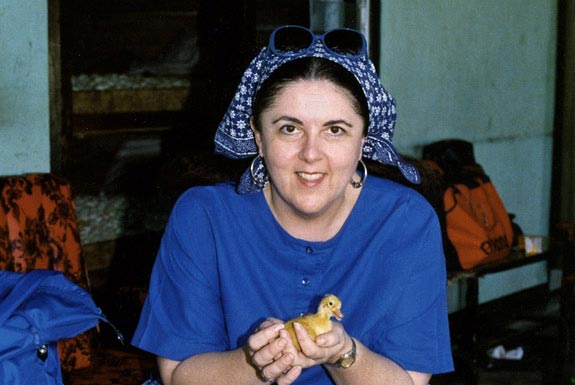Down Blige Road: Where There’s No Place Like Home
Richmond Hill Reflections
Richmond Hill, Georgia
Volume 10, Number 4 (September 2014)
pages 57-60
Leslie Ann Berg (Photos by Callie Beale Photography)
Richmond Hill’s history is engrained deep within the walls of its old buildings, street names, and its land. But there is another place where history runs deep in Richmond Hill. It is a living, breathing history that not only thrived centuries ago, but is still thriving today. It is a history that courses through the very veins of the Richmond Hill people: It is the history of bloodlines.
Some of us are military families that found our way to Richmond Hill because of our duty, others transferred here for a job, and still others came to Richmond Hill for its quiet, safe community and great schools. But there is a very real and permanent group of people who live in Richmond Hill because it is home in the deepest sense of the word: Richmond Hill is where their ancestors settled and where they choose to remain. This group of people is the Blige family.
Meeting a member of the Blige family is like meeting an old friend. They are warm, welcoming, and full of jovial conversation. As I sat around Albertha Blige’s dining room table with her cousin Francis, and her mother Dorothy, and Uncle Pete, both in their 80s, we discussed Blige family history, traditions, and folklore. The women were tight-lipped when it came to telling stories, but Uncle Pete opened up and let me in on who exactly the Bliges were and are.
The Bliges made their way to Richmond Hill after the Civil War in 1875, when three brothers, Andrew, Benjamin, and Rently Blige, migrated south from Charleston, South Carolina. All three bothers married and had eight, nine, and 11 children respectively and so began the large Blige family of Richmond Hill. The brothers worked for wages at the Ogeechee River plantations. As their children grew, the family purchased land from Thomas Savage Clay, a man who owned several plantations in the Richmond Hill area.
Owning land was monumental for the families of emancipated slaves like the Bliges, yet life wasn’t easy. Uncle Pete, Benjamin Blige’s grandson and one of 20 children, recalls what life was like when he was a boy: “[My father] worked about 60 miles from [Richmond Hill]. He left on Sunday evenings and didn’t come back for 2 weeks. My mother was here taking care of the farm. The kids worked… that’s why they had so many kids. Kids carried the farm and my mother did the housework and watched the kids.”…
…Uncle Pete’s accounts of his family may sound like a typical African American ancestral history in the southeastern United States, but beneath the commonalities lies a forgotten history, a history that never made its way into the history books.
The Blige’s African American ancestry is vibrant and evident, yet they are also of Cherokee Indian decent. African-Native Americans? Yes, and in fact, African-Native Americans made up a significant percentage of Native Americans living in the South in the 17th, 18th, and 19th centuries. Yet their existence is not widely accounted for in history.
The American history that most of us are familiar with is one that paints a picture of segregated ethnic groups, depicting Whites as slave owners, Africans as slaves, and Native Americans as tribe members. In most of our minds, all three groups were separate and played a very specific and hierarchical role in history. Yet, before North America was widely colonized, distinct segregation did not exist, and the interaction between Africans and Native Americans was somewhat frequent. Enslaved Africans escaped to Native American tribes (some tribes even hosted stops on the Underground Railroad), some Native Americans were enslaved by Europeans alongside Africans, and some Native Americans had African slaves. Often times, the two groups worked alongside each other, lived together, and shared recipes, myths, legends, and herbal remedies. Africans and Native Americans intermarried and had children. In fact, relations were so frequent that when a census was taken in the early 1800s, 10% of the Cherokee Nation was of African descent; 100 years later, this number increased to 50%.
As interaction between the Africans and Native Americans increased, colonists felt a need to break their alliance and issue laws that secured the land and property the Europeans had acquired. Once the American government was established and began to thrive, such laws were carried out. Only then did the rights ot slave owners gain tremendous strength, while the rights of Africans and Native Americans fell to the wayside. In order to enforce the new laws and segregate the two ethnic groups, a census was taken to categorize all individuals as African or Native American. Categorization was based solely on skin color; consequently, much of the African-Native American history, culture, and ancestral lines were erased. Fast forward 300 years and most Americans know very little, it anything, about this fascinating ethnic group.
The Blige family shares in this incredible story of the African-Native Americans. Their bloodline is unique and in many ways, we wall never truly uncover the rich culture ot the African-Native American due to the lack ot documentation. But the Blige family has main tained a connection to their African-Native American ancestors in their ability to live off the land and their lifelong practice olt faith and spirituality…
Read the entire article here.
